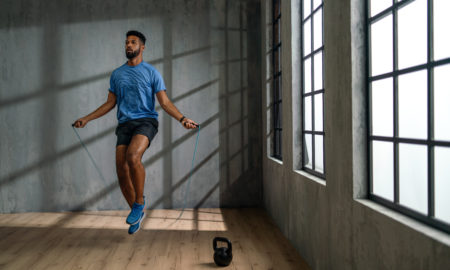Exactly three years before Branch Warren won the ’11 Arnold Classic, I was sitting in the Veterans Memorial Auditorium in Columbus, Ohio, watching the judging and taking notes for an online contest report. Pro shows now begin with each man taking the stage individually and hitting all the mandatory poses as called out by the head judge.
When Branch came out, I was thoroughly impressed and leaned forward to solicit the opinion of one of his peers, who shall remain nameless but who I will say has been in the top five at the Mr. O on several occasions. His evaluation of Warren was about as brief and blunt as could be: “His back sucks.”
As harsh as that proclamation was, I understood what he meant. Branch was not lacking in width or thickness necessarily, but his back definitely didn’t have the same granite-hard density and detail of his mighty wheels or armor-plated pecs. From the front he was hanging pretty well with eventual winner Dexter Jackson, Phil Heath and Kai Greene, but when they turned around, you could see why Branch would end up in fourth—as he did.
Fast-forward three years to the same stage, and Branch had turned a liability into an asset. His back was now gnarled, ruggedly ripped and carved with striations and separations. How did he go about taking what had been a weak point for years and making it into a powerful weapon that helped him win the Arnold?
Priority training. “I saw that Lee Haney and Dorian Yates didn’t have the best arms, but they killed everyone with their backs,” Branch said. “A couple years into my pro career I decided that no matter what it took, I was going to turn my back into a strong point too.”
Though his back and his arms have never responded as easily to the iron as the rest of his physique, Branch never let that deter him. “Weak bodyparts take longer to develop, but you have to keep at it and refuse to give up on them,” he told me. Obviously, Branch trains everything hard, but he devoted extra focus and intensity to his back and arms to make sure they grew.
Room for recovery. Branch toyed with the idea of training back twice a week just as another guy at his gym back in Texas, eight-time Mr. Olympia Ronnie Coleman, had successfully done. Earlier in his career, however, Warren had found that larger bodyparts aren’t as suited to more-frequent workouts as smaller muscle groups such as arms, calves or even shoulders. “Back and legs are two huge areas that take a lot out of you if you hit them right,” he said. “Except for some rare guys with excellent recovery ability like Ronnie, I don’t think it makes sense to work them twice a week.” Branch blasted his back with no mercy once a week, then left it alone so it could recuperate.
More volume, more reps. Since Branch’s back had a full week between workouts, he was able to hit it with a substantial amount of volume. He pounded it with anywhere from six to eight exercises for three to four sets each, for an average total of 20 to 30 work sets. He also upped his reps to 20 to 25 at times, something he had accidentally discovered to be effective. After Branch tore his triceps in 2008, he had to lighten the load on his deadlifts for about a year out of fear the tendon would snap again. “I was finishing up my back days with three sets of 25 reps using 315,” he related. “To take what would normally be a warmup weight and work it that hard for that many reps was brutal, and I do think it helped my back because it gave it a totally different type of stimulation from the heavy sets of 10 I’d been doing for years.”
Squeezing out more detail. Warren also concentrated a lot more on using better form and feeling his lats contract and stretch, and he’s convinced that it made a huge difference. He even used more machines and cables than his hardcore free-weight philosophy would normally accept. “I had to think outside the box and do things I never had before, because I knew once my back had that polished and mature look, my entire physique would step up to another level.”
Editor’s note: Ron Harris is the author of Real Bodybuilding—Muscle Truth From 25 Years in the Trenches, available at www.RonHarrisMuscle.com.




















You must be logged in to post a comment Login